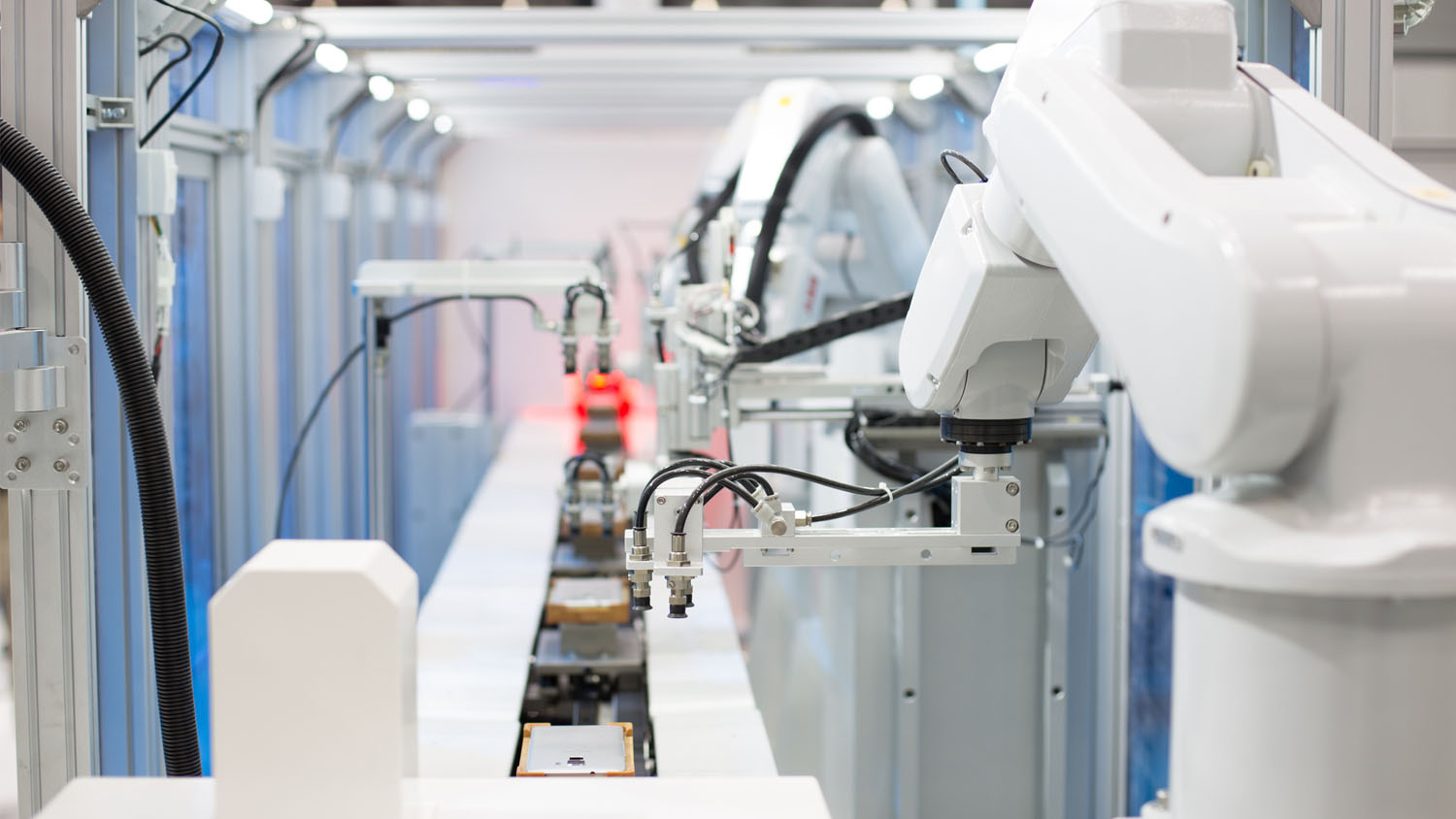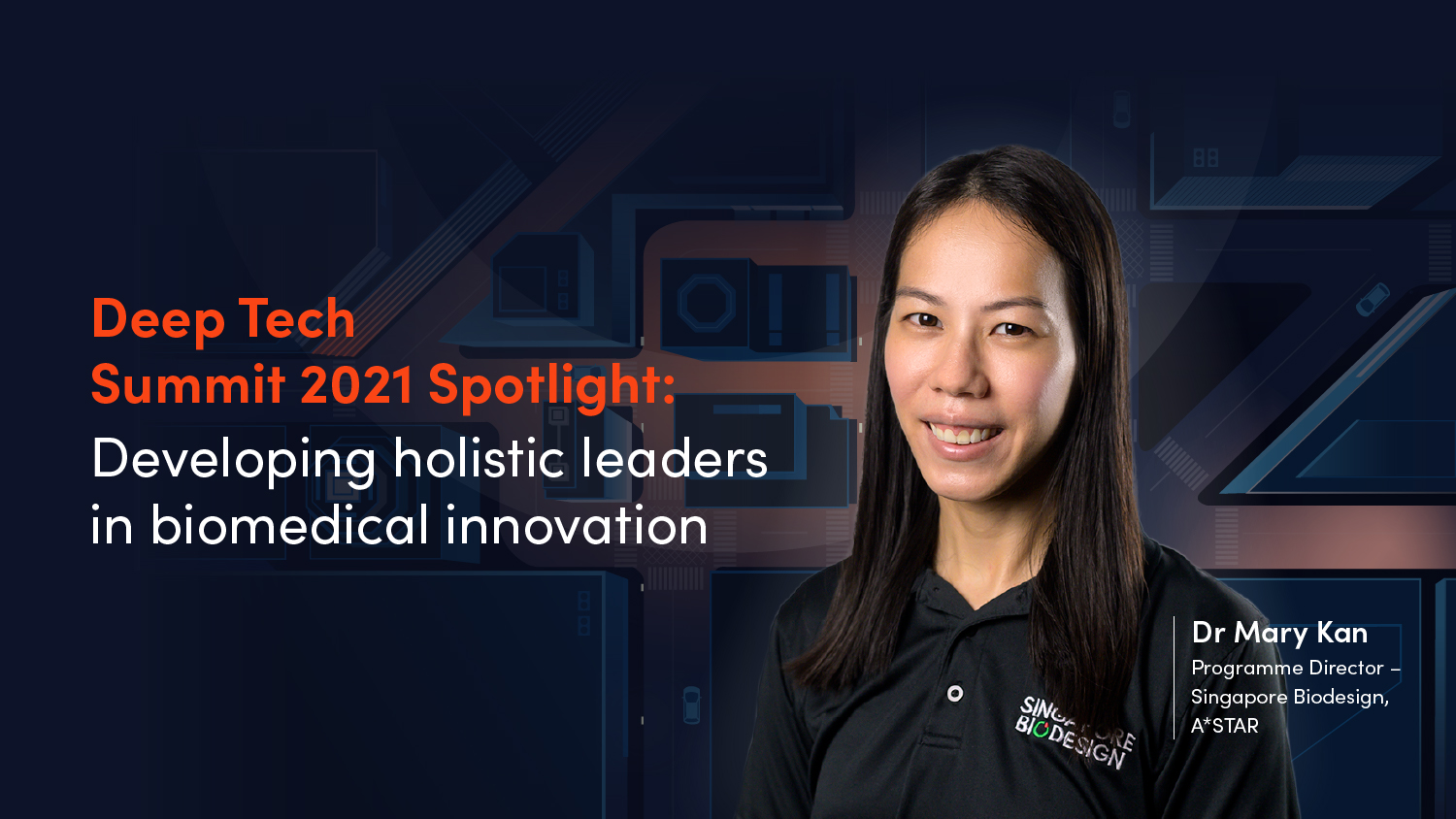How CellVec’s Dr Paula Lam strives to give her mentees a competitive edge and why it matters in the long run
Tue, 07/04/2023 - 12:00
An early personal tragedy saw biochemist Dr Paula Lam dedicate her career to developing effective new cancer treatments. Today, as Head of Research and Development at gene therapy CDMO CellVec, she’s spearheading research into the development of gene transfer technologies.
Through her role as a mentor with SGInnovate, she’s also providing a new generation of biochemists and molecular biologists with a specialised apprenticeship experience as she works to shape innovative new solutions in the fight against cancer.
We asked Paula to describe what motivates her as a mentor, and what apprentices can gain from a mentorship experience with CellVec.
Tell us how you first became interested in cell and gene therapy treatments for diseases such as cancer.
Cancer research is a field I’m passionate about because I lost my dad to cancer when I was 14. From then on, I was determined to pursue a career in this area. To this day, my commitment to developing new cancer treatments only grows as I learn more about how fascinating a living cell can be.
My journey began after I gained a PhD in biochemistry and molecular biology at the University of Leeds in 1994. I went on to undertake postdoctoral research at St. Jude Children's Hospital in the US and at the Chinese University of Hong Kong.
But a real turning-point came during a stint as a researcher at Massachusetts General Hospital, when I first learned about the innovative field of viral-vector gene therapy treatment. Here, modified viruses are injected into patients to fight or prevent a range of diseases, including cancer, instead of using chemical drugs or surgery.
The viruses act as a drug-delivery vehicle, introducing specific DNA sequences – which encode genes – into cells. To help them enter the cells efficiently, the viruses also evolve specialised molecular mechanisms, or ‘vectors.’ Scientists work to produce those vectors in laboratories to ensure the gene therapy treatment can have the best chance of success.
I’ve continued honing my research skills in this area ever since. It’s one reason why, in 2018, I joined CellVec. My role here allows me to continue exploring the tremendous potential I believe viral-vector gene therapies have to make a real difference, both in the early detection of cancer as well as its treatment.
What can apprentices gain through this experience that they would not be exposed to elsewhere?
Mentorship programmes offer apprentices a great opportunity to start developing the real-world skills and experience that a career in the cell and gene therapy field requires. For example, our interns get intensive training in the techniques we apply, our research methodology and operating our specialised equipment.
They also get opportunities to network and build connections with industry peers. That might involve attending local conferences and seminars as part of our team – potentially deepening their industry knowledge while gaining some exposure.
At the same time, I make sure apprentices gain access to resources such as webinars that can help them broaden their understanding of key issues in our field. And similarly, if the CellVec senior team is holding discussions with external technical specialists as part of our product development work, I’ll often invite our apprentices to sit in so they gain better insights into the direction the company’s taking.
Through access to these hands-on experiences and training, the mentees can gain a significant competitive advantage in the workforce.
Tell us more about how you structure each mentee’s learning journey.
It depends on the person. Some may initially prefer to just observe, while others jump at the opportunity to be more involved.
So usually, my first step is to familiarise myself with the apprentice’s level of experience and approach. If I see they lack confidence, I’ll be more hands off. I’ll demonstrate how to execute an experiment and give any necessary theoretical background, but then step back and let them proceed, so they know they can do it.
Dr Paula Lam with a member of her team. She takes a hands-on approach at the start of every new joiner’s journey.
If the apprentice comes to me with questions – such as ‘how much reagent should I add?’ or ‘How many cells should I be seeing?’ – of course I’m on hand to help. But ultimately, the idea is that they try to work it out. I hope to see them mature to the stage where they can do their own critical thinking, even to the point of telling me they think a process can be done a better way. That’s the kind of interaction I get especially excited about.
We also offer incentives to help mentees engage. For example, I listed one highly productive apprentice as co-author on a paper I presented at an international scientific conference.
I firmly believe every person has their own shining point. It’s like when you take a stone and start to polish it. Eventually you’ll see a beautiful shine develop because of the effort being applied.
What motivates you as a mentor and how would you sum up your approach?
I firmly believe every person has their own shining point. It’s like when you take a stone and start to polish it. Eventually you’ll see a beautiful shine develop because of the effort being applied.
That could describe my approach. I identify someone’s potential strengths, then try to help them polish those so they can give the person a competitive edge once they’re out in the world.
In this I’m inspired by a positive mentorship experience of my own. I mentioned that as a young scientist, I worked at Massachusetts General Hospital. While there, I was lucky enough to be mentored by leading neurologist Professor Xandra Breakefield. Xandra made sure to provide space for all her team members so they could think independently, while also helping in a sensitive and caring way to shape their thoughts.
Dr Paula Lam (front row, 1st from the right) at Professor Xandra Breakefield’s (front row, 5th from left) 70th birthday gathering in 2013.
I try my best to replicate that experience for my people. I recall one apprentice with great promise where it took time to build a personal connection and help bring out their more positive attributes. Yet eventually the process did succeed and that manifested itself in a marked improvement in their quality of work. I was delighted when that trainee was offered a permanent position at the company.
Are there any common misconceptions mentees may have when they first join CellVec, and how do you go about changing those?
Apprentices may believe the mentorship experience is going to be something like a university lab rotation scheme, where students move between campus departments to gain an overview of different research areas.
However, our apprentices are only exposed to one research and development area, and the training is in-depth.
It’s a process CellVec is really committed to. We see mentoring as a valuable opportunity to develop the younger generation’s interest in and enjoyment of science and research. That’s vital when you consider that there’s a global shortage of skilled workers in our sector.
By identifying and nurturing new talent, we’re aiming to develop high-quality, productive people who could potentially help us grow our company. So from our side it’s a long-term investment – but hopefully a win-win situation as well.
Find out how you can get industry experience and apprenticeship opportunities here: https://www.sginnovate.com/career-development-jobs
Trending Posts
- Keeping satellites safe: How CYSAT Asia 2026 is tackling space cybersecurity
- The future of fusion energy: What will it take to bring the power of the stars to earth?
- How an aerospace engineer charted a path to quantum technology
- Scaling nanomaterials is challenging — Meet the startup with a hybrid solution
- Surveying Singapore's early-stage emerging tech startup landscape






